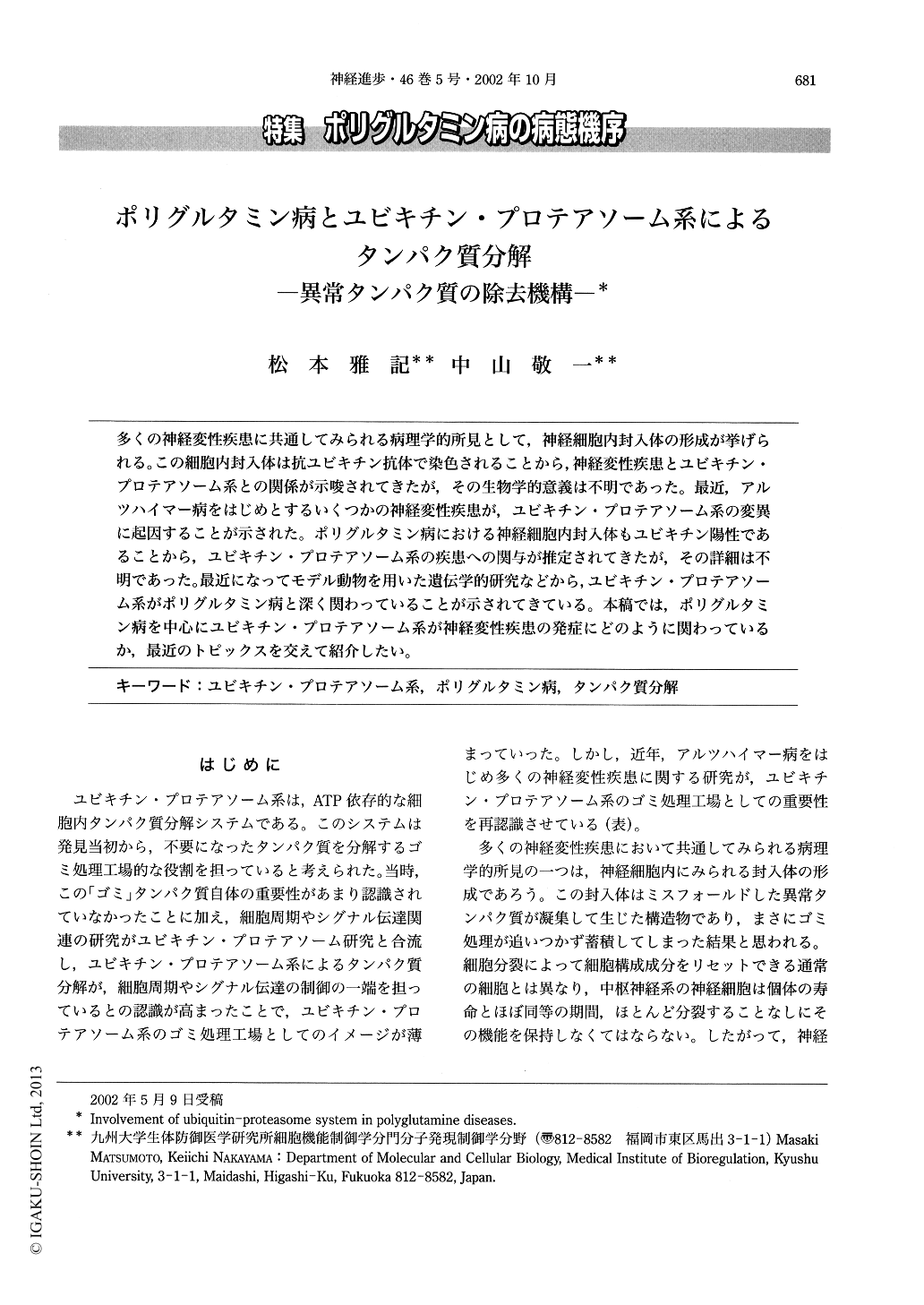Japanese
English
- 有料閲覧
- Abstract 文献概要
- 1ページ目 Look Inside
多くの神経変性疾患に共通してみられる病理学的所見として,神経細胞内封入体の形成が挙げられる。この細胞内封入体は抗ユビキチン抗体で染色されることから,神経変性疾患とユビキチン・プロテアソーム系との関係が示唆されてきたが,その生物学的意義は不明であった。最近,アルツハイマー病をはじめとするいくつかの神経変性疾患が,ユビキチン・プロテアソーム系の変異に起因することが示された。ポリグルタミン病における神経細胞内封入体もユビキチン陽性であることから,ユビキチン・プロテアソーム系の疾患への関与が推定されてきたが,その詳細は不明であった。最近になってモデル動物を用いた遺伝学的研究などから,ユビキチン・プロテアソーム系がポリグルタミン病と深く関わっていることが示されてきている。本稿では,ポリグルタミン病を中心にユビキチン・プロテアソーム系が神経変性疾患の発症にどのように関わっているか,最近のトピックスを交えて紹介したい。
Various inherited neurodegenerative diseases result from an increase in the number of glutamine codon repeats within the open reading frame of the responsible gene. Such disorders include Huntington's disease, spinobulbar muscular atrophy, dentatorubral pallidoluysian atrophy (DRPLA), and spinocerebellar ataxia (SCA) types 1, 2, 3, 6, and 7. The presence of insoluble aggregates in neurons is a hallmark of these polyglutamine diseases as well as of many other neurodegenerative disorders, including Alzheimer's disease, Parkinson's disease, amyotrophic lateral sclerosis, and prion diseases.

Copyright © 2002, Igaku-Shoin Ltd. All rights reserved.


